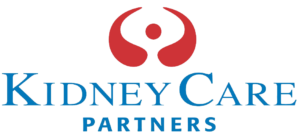Health Care Reform Efforts Must Reassure Patients
April 17, 2017
Published by Real Clear Health
We’ll know in fairly short order whether House Speaker Paul Ryan and other Republican leaders learned anything from their failed attempt to ram legislation repealing and replacing Obamacare through Congress. The initial effort didn’t pass for a number of reasons but mostly because no one thought things through to the end.
They forgot something no politician should: actions and ideas have consequences. Despite having had seven years to put a plan together for that eventual day when the GOP ruled in the House and Senate and White House they weren’t ready. Instead they went with what they had in a drawer, something that worked up to a point but left consumers asking more questions than they were getting answered.
You cannot do health care reform if it frightens patients who believe they will lose access to the care they are already receiving. This is why the Congressional Budget Office estimates showing tens of millions of people losing insurance as a result of what Ryan and company were trying to do was so devastating. It’s that kind of reality that killed Obamacare after it became law. Whatever Congress does must ensure stability and continuity of care, especially among the most vulnerable populations during the transition period between what we have now and what comes next.
Consider those suffering from fairly common ailments like kidney disease and End Stage Renal Disease (ESRD). For years America has provided access to quality, life-sustaining care and paid for it through a “public-private” shared responsibility system that includes private insurers and Medicare. It works – and works well; why policymakers are looking to change it is something of a mystery.
ESRD (more commonly known as kidney failure) affects more than 660,000 Americans. Unless a patient receives a transplant (and the supply is not nearly enough to meet demand) the only other option is dialysis. For more than 466,000 Americans this three-days-per-week treatment sustains their lives and their hope.
Most individuals with ESRD already live with chronic conditions like diabetes and that only complicates matters further. Good kidney care depends on a sophisticated network of clinicians, insurers, and charitable organizations working together in the interests of the patient. The existing private-public partnership that consists of private insurers and the Medicare ESRD benefit ensures the provision of high-quality care to all patients, regardless of age, income, or background.
It’s an imperfect partnership but it works – and has since 1972 when the federal government created the safety net for long-term coverage. The government established limitations on the number of months a private insurer takes financial responsibility for ESRD patients – currently, up to 30 months – after which the Medicare ESRD benefit kicks in and becomes the primary payer, providing insurers economic predictability and limiting exposure. This is true for everyone no matter how long their private insurance has been maintained. This is essentially a subsidy for the insurance companies unique in American health care.
Private insurers, who are always looking for a place to save a dollar, are trying to get the federal government to agree to limits on coverage options. In some instances the realities of the marketplace may make such limitations reasonable; when it comes to kidney care they would undermine the integrity of the entire system. Choice, continuity, and access to care are now threatened by what insurers want to do. That puts lives and livelihoods at risk, making health care reform and repeal and replace that much harder to do.
Kidney disease frequently robs people of their ability to work, which is why charities have stepped in to help provide other avenues for funding care. In 2016 the American Kidney Fund alone provided financial support for more than 98,000 in all 50 states. Charitable assistance to those in need help to lighten the load further, relieving some the pressure that comes with mounting medical bills and insurance premiums. Most importantly, patients retain the ability to choose the plan most appropriate for their situation because charities don’t discriminate based on provider or insurance.
Sadly, some private insurers appear to view altruism as an impediment to profit. They’ve begun turning away patients who rely on charitable premium assistance. It’s as though rejecting charitable assistance for the sickest, most expensive patients is supposed to force them into Medicare, where the costs are no longer their responsibility. That message, delivered in a one-minute spot in the next campaign cycle, will scare voters.
These are the kinds of things policymakers have to keep in mind when writing a resurrected version of the repeal and replace bill we may see just after Easter. A bill that can be said to allow for discrimination against those experiencing kidney failures – as some big insurers would like – is not going anywhere.
Policymakers have to draw the line. It’s what they were elected to do. Insurers should be required to continue accept premium assistance from government-approved charitable organizations as they have for years. That sustains choice for ESRD patients and makes the whole thing less scary to health care consumers. Multiply that out over hundreds of chronic diseases, each with their own special interest constituencies and lobbies, and you’ll begin to understand how mishandling even one can derail the whole thing. Congress’ first concern when it comes to health care reform should be about producing better health comes, not scaring the sick.
Peter Roff is a former UPI news analyst who provides public policy commentary on the One America News network and other outlets.
Click here to see the original article on the Real Clear Health website.
